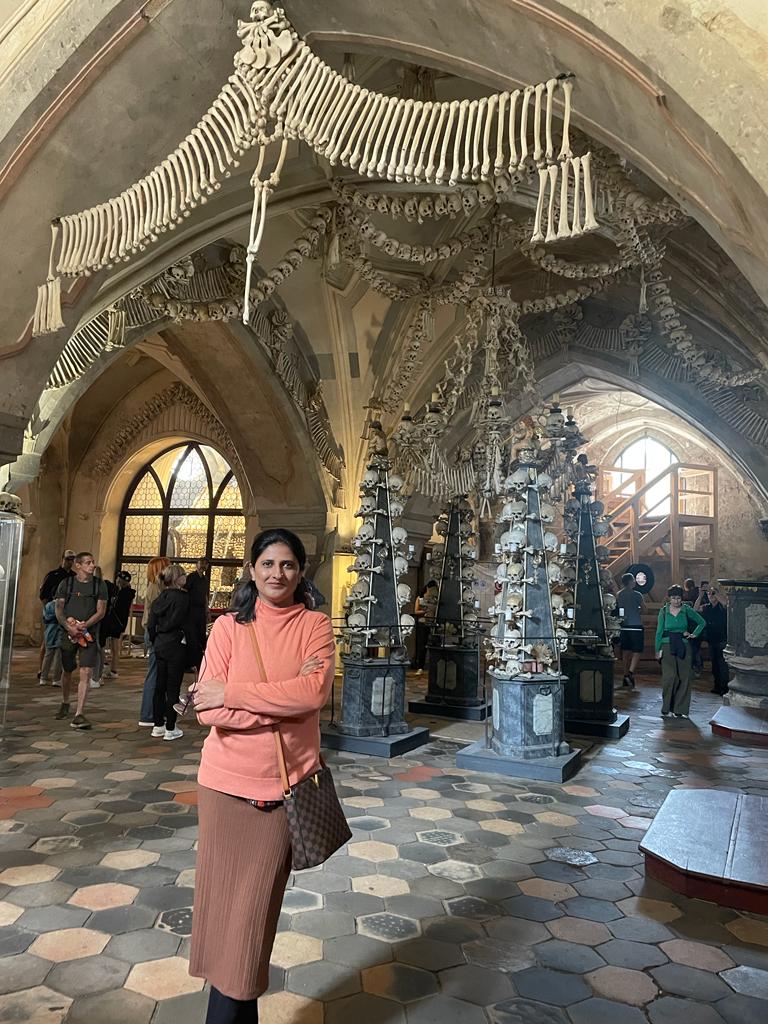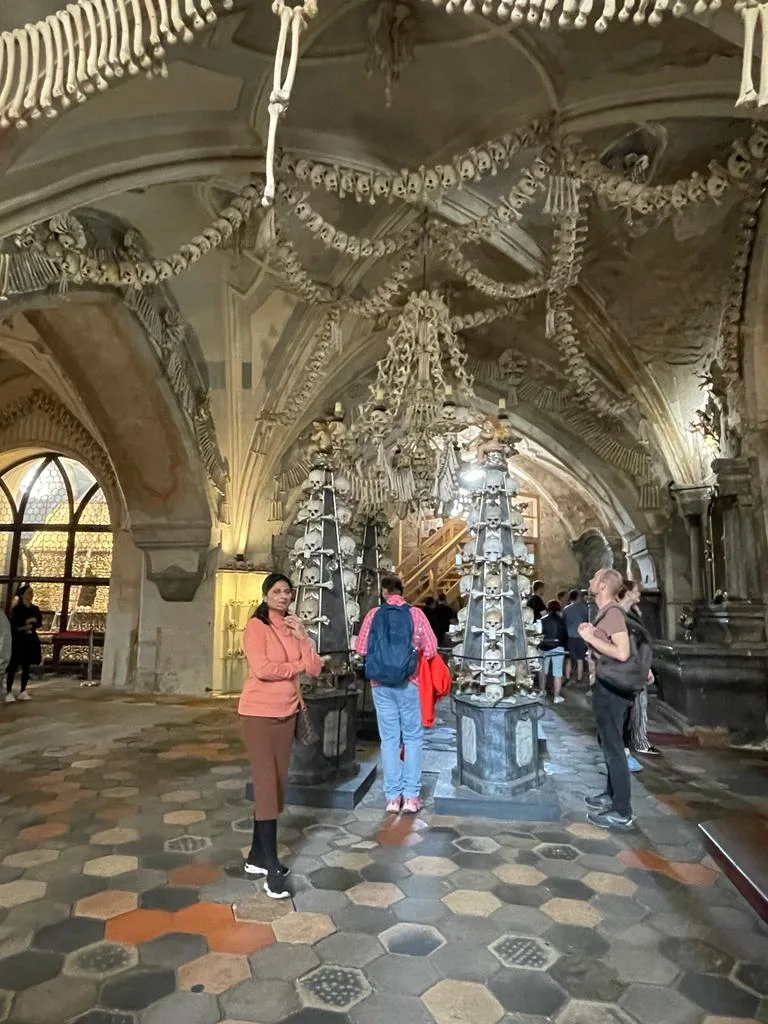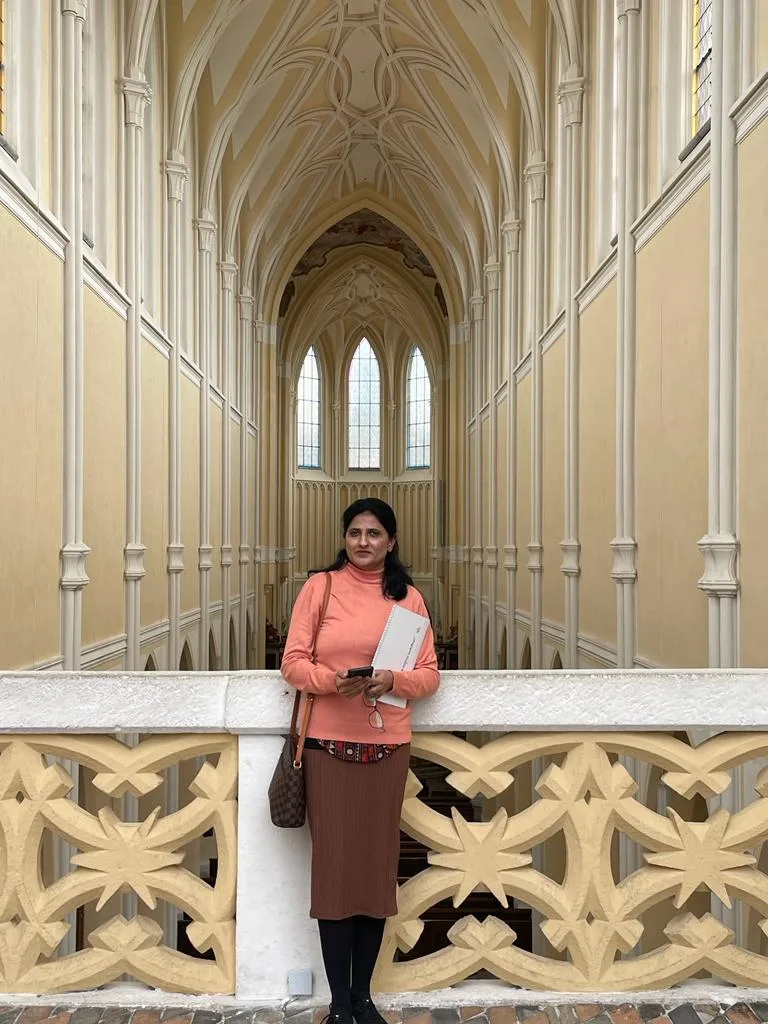By Shazia Anwer Cheema
The bizarre and macabre Sedlec Ossuary, also known as the Bone Church, is situated in Kutná Hora, Czech Republic. It is one of the world’s most unsettling and fascinating locations and is a tiny Roman Catholic chapel decorated with thousands of human bones. About 70 kilometers east of Prague, the ossuary is now a well-liked tourist attraction.
Every bone in the human body is represented by a massive chandelier that hangs in the chapel’s center
The Sedlec Ossuary’s origins can be traced to the 13th century when the cemetery of the Sedlec Cistercian Monastery was covered with soil brought from the Holy Land. As a result, people from all walks of life sought out the cemetery as a place to lay to rest their loved ones. Due to epidemics, conflicts, and religious persecution throughout history, there were a lot more burials.
Rint used between 40,000 and 70,000 skeletons to produce an astounding variety of decorations
The Hussite Wars in the 15th century left Kutna Hora in utter ruin, and thousands more bodies were buried in the Sedlec cemetery. Early in the 16th century, because of the cemetery’s overcrowding, it was decided to exhume some of the remains and store them in the chapel’s cellar.
A monk who was partially blind was assigned the task of organizing the bones, and he stacked them in pyramidal shapes.
The ossuary wasn’t transformed into the magnificent work of art it is today until the 19th century when a local woodcarver by the name of Frantiek Rint was hired to do so.
In order to arrange the bones artistically, Rint used between 40,000 and 70,000 skeletons to produce an astounding variety of decorations.
Bone garlands, a chandelier made entirely of bones, and various bone sculptures are among the decorations.
The bone pyramids, which form four sizable mounds at each corner of the chapel, are among the most amazing displays.
Every bone in the human body is represented by a massive chandelier that hangs in the chapel’s center.

Visitors to the Sedlec Ossuary can explore the chapel and get a close-up look at this grisly craftsmanship.
Due to the enormous number of bones and the meticulous arrangements, the atmosphere is both reverent and unsettling, but oddly captivating.
Due to its historical significance and distinctive artistic representation, the Sedlec Ossuary draws thousands of tourists every year. It displays the inventiveness and creativity of human craftsmanship while also serving as a reminder of the frailty and transience of life.
Concerning the handling of human remains, the Sedlec Ossuary in Kutná Hora, Czech Republic, has sparked discussions.
One’s perception of the Sedlec Ossuary’s disrespectfulness depends on their own personal beliefs and values
Opinions on the ossuary are divided, and beliefs on whether or not it is disrespectful are largely influenced by cultural, religious, and individual perspectives.
Thousands of people’s remains do, in fact, reside in the Sedlec Ossuary, and these remains have been artistically arranged and used as ornaments inside the chapel.

Some contend that this handling of human skeletons is disrespectful and goes against cultural norms and customs. The historical setting and the particular circumstances that gave rise to the ossuary must be taken into account, though.
Due to various causes like epidemics, wars, and religious strife, it became necessary to build the Sedlec Ossuary.
In order to ensure that the remains were stored and preserved with respect, the ossuary developed over time as a remedy for the crowded cemetery.
The ossuary was also transformed into an artistic display in the 19th century when woodcarver Frantiek Rint was hired to arrange the bones into ornamental structures. The creative project behind Rint’s work was to make a depressing setting visually arresting and thought-provoking.

Although some people may find the ossuary to be unsettling or even controversial, it is important to approach the subject with an open mind and understand that different cultures and eras have different ideas about death, burial customs, and how to treat human remains.
In the end, one’s perception of the Sedlec Ossuary’s disrespectfulness depends on their own personal beliefs and values.
Note: Writer Shazia Anwer Cheema is an author, columnist, and foreign affairs expert who writes for national and international media. She is a doctoral student and researcher in semiotics and philosophy of communication at Charles University in Prague. She can be reached at her: Twitter @ShaziaAnwerCh Email: shaziaanwer@yahoo.com
